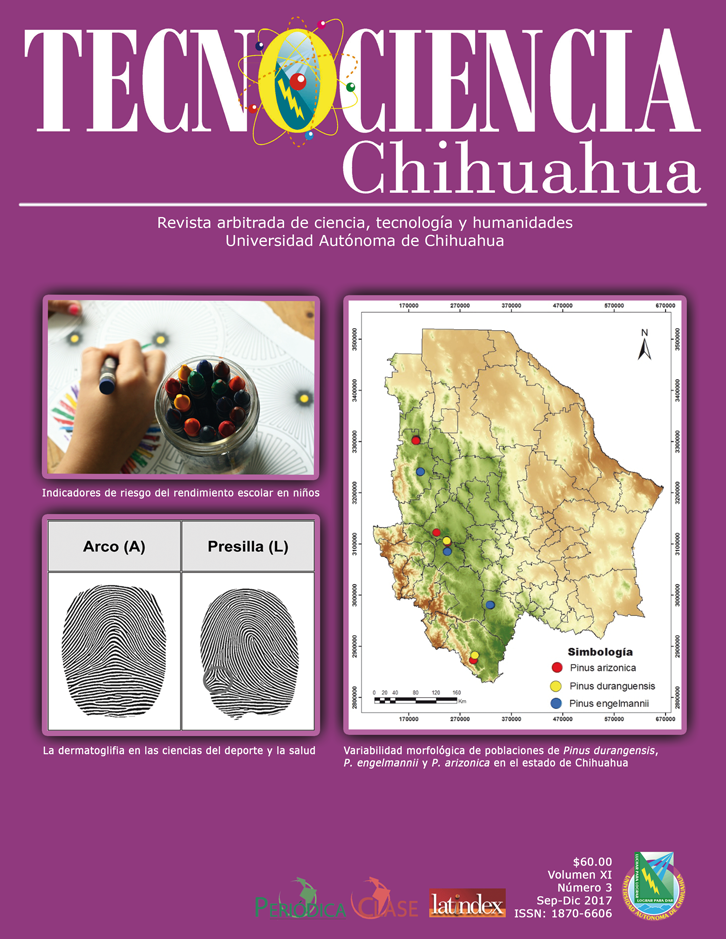Statistical model for the analysis of temperature: case study the 1895 - 2014 serie for Florida state
Modelo para el análisis de valores de temperatura: caso de estudio serie 1895-2014 del estado de Florida, EUA
Resumen
This study applied experimental design to mean annual, mean maximum and mean minimum temperatures of Florida State, U. S. A. Considerations are: 1. Testing various continuous probability distributions, to identify the best one, to avoid experimental errors using the statistics Anderson-Darling (A-D) and P-value. The results showed the normal distribution was the best. 2. Calculations of descriptive statistical for the mean annual, mean maximum and mean minimum temperatures. The results showed very little experimental errors. 3. Constructing normal probability plotting positions to calculate return periods and probabilities of occurrence. 4. Construction of time-series analysis and its subjectivist validation, to assess annual temperature trends. The results showed upward trends for the mean annual, mean maximum and mean minimum temperatures. 5. Establishing a reliable database temperature framework for Florida State, to be used by researchers in meteorology, environmental engineering, hydrology, civil engineering, agriculture, etc.
Citas
Intergovernmental Panel on Climate Change. 2013. https://tinyurl.com/44w8xwkm
Quevedo, H. & Domínguez, A. 2013. Aplicaciones de Probabilidad y Estadística a Problemas de Hidrología. El Cambio Climático y sus Efectos en los Recursos Hidrológicos. (1st ed.) Editorial Académica Española. ISBN 3659085340, 9783659085345.
Quevedo, H. A., A. López, & I. Alvarado. 2014. Design of an innovative probability plotting position for precipitation data of El Paso, County, Texas, U. S.A. International Journal of Applied Science and Technology 4(3):85-93. https://www.ijastnet.com/journals/Vol_4_No_3_May_2014/11.pdf
World Meteorological Organization. 2016. https://public.wmo.int/en
Remote Sensing Systems. 2015. http://www.remss.com/measurements/upper-air-temperature.
Union of Concerned Scientists. 2015. Confronting the realities of climate change. The consequences of global warming are already here. Union of Concerned Scientist.
U. S. Climate data. 2016. http://www.usclimatedata.com/climate/florida/united-states/3179
Derechos de autor 2017 TECNOCIENCIA Chihuahua

Esta obra está bajo licencia internacional Creative Commons Reconocimiento-NoComercial 4.0.







